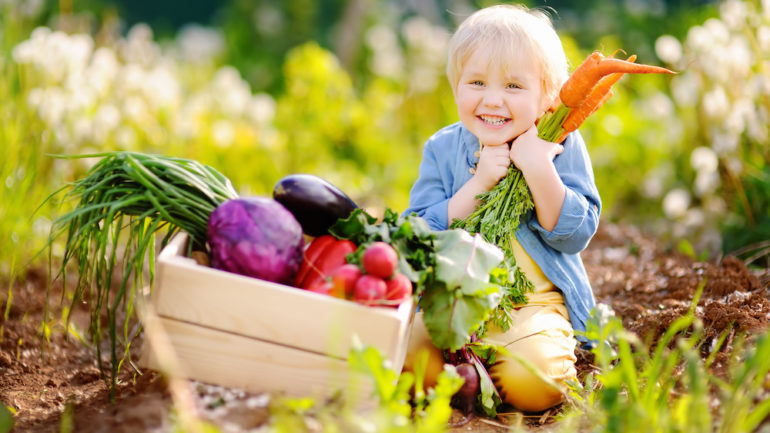Growing your own fruits, vegetables, and herbs, isn’t as hard as you might think — even without a large yard. Where do you start? Here are the basics to a successful backyard kitchen garden.
Start your gardening at the computer.
Many online gardening sites provide planner templates, giving step-by-step instructions on everything from starting with seeds to growing conditions, fertilizing, and watering. Read up on different vegetables and herbs – especially those you use most frequently. For in-ground plants, mix 50/50 topsoil with the dirt already there; for containers, use sterile potting soil.
The best soil for your vegetable and herb garden.
The ideal soil has a pH between 6.2 and 6.8 and a loamy texture. If your soil has a high salinity, is overly dry, or tends toward muddiness, you might need to amend it. Outdoor vegetable and herb gardens are the perfect place to use your own compost. Or use a customized organic fertilizer to adjust the soil to the right growing conditions.
How many plants should I use?
A good first vegetable and herb garden is about ten feet square. Pay attention to spacing, lighting, and whether you want to harvest them all at once. Some ripen quickly and produce all season; others mature in larger batches. Plant less rather than more, as some plants – like tomatoes – can be extremely prolific.
What is succession planting?
Some vegetables work well by planting a few feet of each vegetable or herb every few weeks. Use this tactic with corn, carrots, and green beans and for herbs like basil, dill, and cilantro. This way, you can prolong your growing season.
Easiest vegetables for your kitchen garden.
Smaller versions of tomatoes (grape, cherry, pear) are more disease-resistant than large varieties. Garlic grows readily from cloves placed in the ground – and animals leave them alone. Leafy lettuces grow well in containers placed in the shade and can produce all season with strategic harvesting. Take cues from your region as to what grows naturally, and look for plants compatible with your climate conditions.
When planting in pots.
Choose from terra cotta, galvanized metal, glazed ceramic, or outside-the-box options like wheelbarrows, antique bathtubs, hollowed stumps, even wagons. For smaller vegetables and herbs, look for pots with a 6-inch to 8-inch diameter. For larger pots, layer packing peanuts across the bottom prior to potting soil to avoid extra weight.
Winterizing your garden.
After the first freeze, add four inches to six inches of compost and then top with straw, evergreen boughs, or mulch. Frost blankets are another option. Pots make bringing plants inside extremely simple. Alternately, extend your growing season with a greenhouse that will protect your plants from weather, animals, and pests.
What to do when staging?
While some people enjoy growing their own gardens, others may view it as high maintenance. Consider scaling back the size of your garden when selling your home so your outdoor spaces appear larger with areas for relaxing, playing, and gardening. To prepare for showings, keep your outdoor kitchen herb garden tidy and pruned. Having your favorite vegetables and herbs in pots will make moving them with you easy.
Related – What is Composting and Why should I do it?


